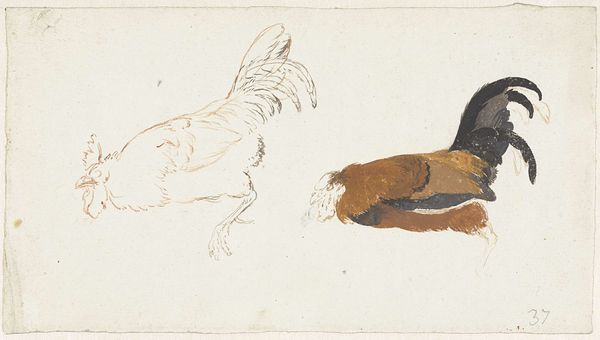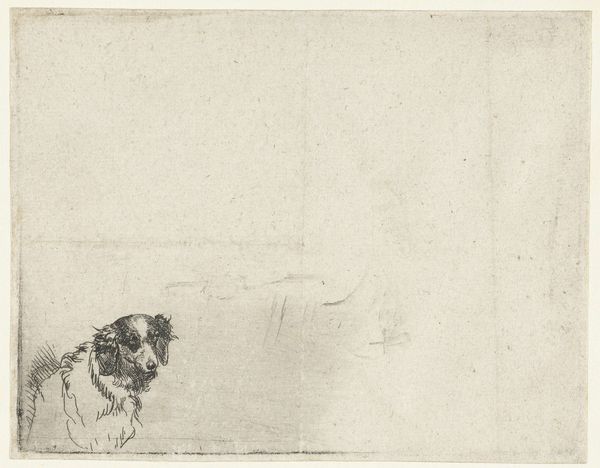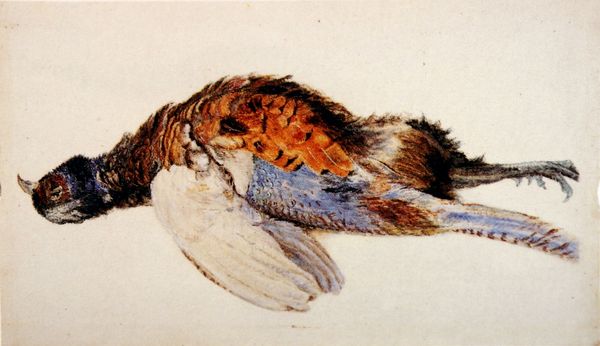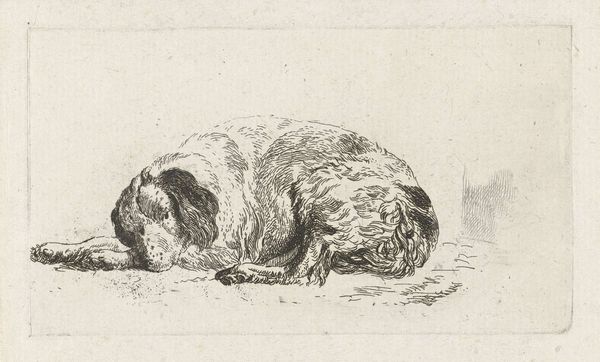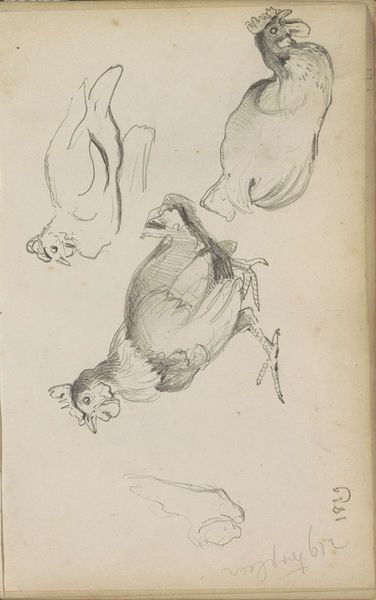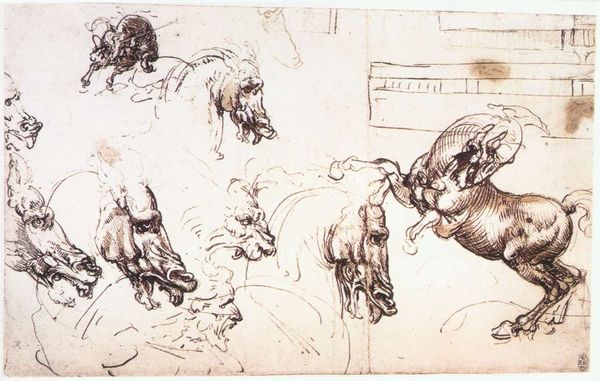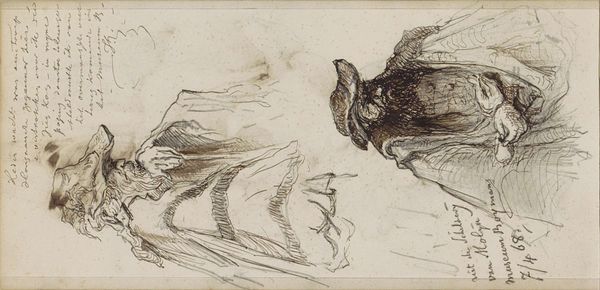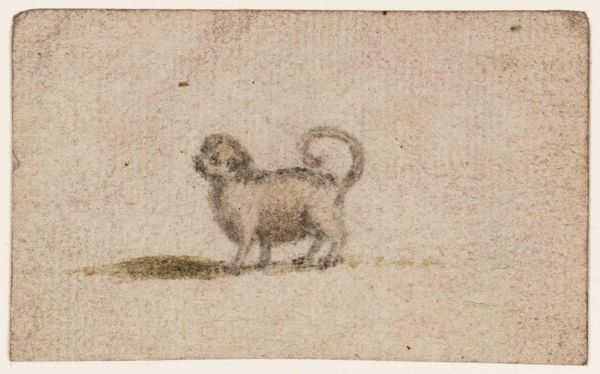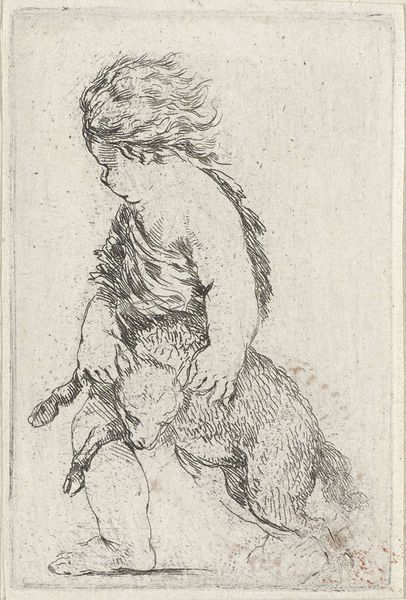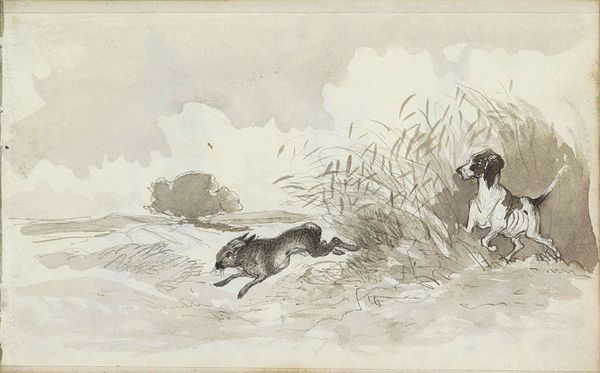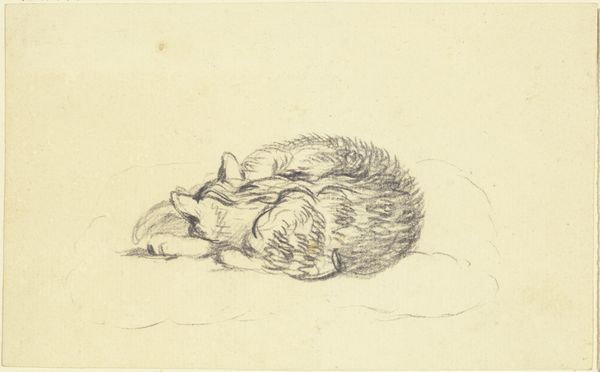
#
abstract painting
#
rough brush stroke
#
dog
#
fluid brush stroke
#
charcoal drawing
#
possibly oil pastel
#
oil painting
#
fluid art
#
acrylic on canvas
#
underpainting
#
watercolor
Copyright: Public domain
Editor: This is "Dogs" by George Harvey, its exact date is unknown, and it appears to be mixed media on paper. The looseness of the watercolor technique gives it an informal, playful feel. What jumps out at you when you see this piece? Curator: I see an intriguing example of the intersection of artistic practice and societal views on domesticity. Dogs, historically symbols of loyalty and status, began appearing more frequently in domestic scenes throughout the 19th century as pets rather than simply working animals. How do you think this painting engages with that shift? Editor: Well, the rough sketch style makes me think this was a preliminary study. Is it meant to be a public work, or something more personal? Curator: That's precisely where the historical context becomes important. Consider the rise of art academies and formal portraiture. This work, in its seeming informality, offers an alternative. The quick, almost impressionistic brushstrokes might be Harvey signaling a break from traditional, stuffy depictions of animals within the art world. It is taking on the status of popular culture, and the animals we chose to keep. Editor: So it's potentially a commentary on art's role in depicting everyday life and, perhaps, a subtle critique of more rigid academic styles? Curator: Exactly! The deliberate choice to depict these dogs with such immediacy speaks volumes about art's evolving function. Artists, and the institutions supporting them, were slowly recognizing the power of depicting commonplace subjects. But it still has to conform to gallery rules, and expectations, which in themselves change slowly. It suggests this changing role, with its casual feel, is art to be accepted? Editor: It’s interesting how what seems like a simple depiction of dogs can reveal so much about the broader art world at the time. Curator: Indeed. Analyzing the social context allows us to understand these choices beyond just aesthetic preferences. And that is a part of making the art public in galleries and museums.
Comments
No comments
Be the first to comment and join the conversation on the ultimate creative platform.

